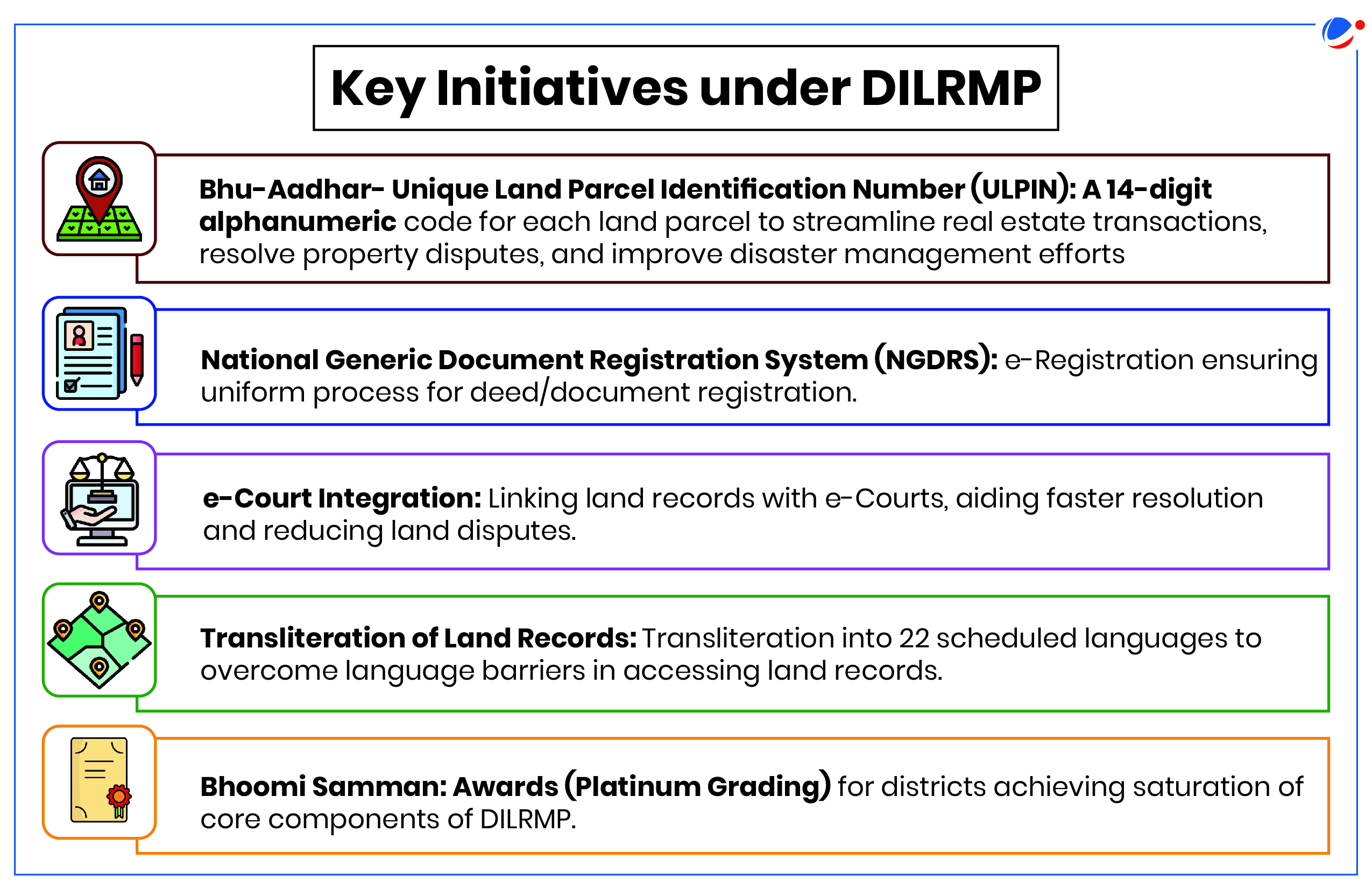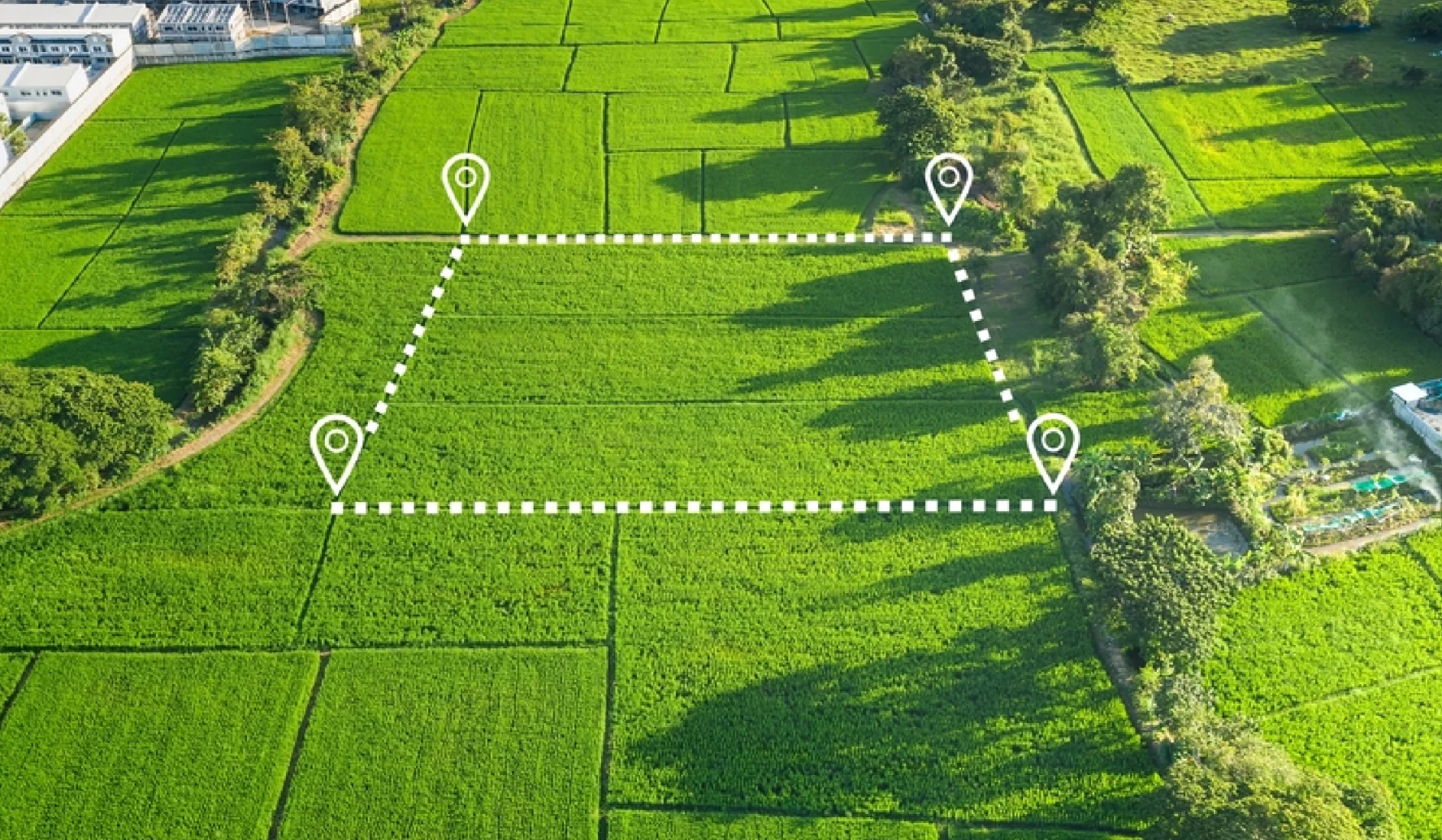Why in the News?
Union Minister of Rural Development recently notified that nearly 95% of the land records have been digitized in Rural India since 2016.
More on the News
- This achievement is due to the Digital India Land Records Modernization Programme (DILRMP).
- Additionally, Digitization of cadastral maps has reached 68.02% at the national level.
- Also, 87% of Sub-Registrar Offices (SROs) have been integrated with land records.
About Digital India Land Records Modernization Programme (DILRMP)
- Launched: In 2016 by revamping the National Land Records Modernization Programme.
- Ministry: Central Sector Scheme under the Department of Land Resources, Ministry of Rural Development.
- It has been extended from 2021-22 to 2025-26 with the addition of two new components viz.
- Computerization of all Revenue Courts in the country & their integration with land records.
- Consent-based linking of Aadhaar number with Records of Rights (RoR).
- It has been extended from 2021-22 to 2025-26 with the addition of two new components viz.
- Aim: To replace the manual presumptive land-title system with a digital conclusive land titling system.

Need for Digitization of Land Records
- Socio-economic relevance: Access to land and its documented ownership is vital for livelihood of the majority of the vulnerable sections – poor, marginal farmers, tribes, etc.
- Land ownership disputes: Lack of a conclusive titling, illegal land acquisition through forgery and Benami property, have led to increased land ownership disputes.
- More than 60% of the litigation in India is land-related.
- In conclusive land titling system, land records designate actual ownership. The title is granted by the government.
- Inefficient administrative processes: The system of updating and correcting land records is very complex, elaborate and tedious, which can lead to corruption, land grabbing, etc.
- Outdated mapping: Lack of updated records has resulted in records not being representative of the present ground realities relating to possession and ownership.
- Targeted public service delivery: Exclusion errors in rural development schemes linked with land ownership due to lack of effective land titling hinder the social justice objectives.
- E.g., Through the PM-Kisan scheme, the government provides income support to all landholding farmers' families
- Strengthening revenue administration: Property tax and land-based financing form a major source of revenue for local governments.
- Infrastructure development: Land disputes and unclear titling lead to cost delays and inefficiencies in infrastructure development and encourages black market of land transactions.
Challenges in the digitalisation of land
- Presumptive land titling: The transfer of land based on Transfer of Property Act, 1882 requires registration of sales deeds and not of land titles.
- Thus, bona fide property transactions may not always guarantee ownership, as earlier transactions could be challenged.
- Centre-State coordination: Land being a state subject, digitisation of land records depends on the willingness of state governments and centre-state cooperation.
- Lack of coordination and standardisation among states in terms of land laws, policies and systems, also hinder digitalisation.
- In silos approach of Departments: Land ownership is established through multiple documents maintained by different departments, making it cumbersome to access them.
- E.g. Sale deeds are stored in the registration department, maps are stored in the survey department, and property tax receipts are with the revenue department.
- Legal provisions related to registration: Non-mandatory registration for transactions such as acquisition of land by the government, property leased for less than 1 year, and heirship partitions under the Registration Act, 1908, leading to increased litigation.
- High Cost of registration: High stamp duty and registration fees discourages formal registration of property transactions, leading to discrepancies in reflection of ground realities of land records.
- Others: Legacy data issues, stakeholders' resistance to change, infrastructure gaps in certain regions, procedural complexities, technological constraints, etc.
Way Forward
- Conclusive land titling: Moving towards a system of conclusive land titling and state-guarantee of ownership will aid in improving the transparency and accuracy of land records.
- Model Act on Conclusive Land Titling (2020) by NITI Aayog can aid in formulating state laws in this regard.
- Legal reforms: Changes in the laws related to registration of property such as registration of property titles, timely updating of existing records, etc.
- Technological integration: Improving efficiency of GIS technology for geo-referencing of cadastral maps, National Generic Document Registration System (NGDRS), etc.
- Training and awareness generation: Training of personnel and improving digital literacy and awareness of people for effective implementation of the scheme.
Land Reforms in IndiaLand reforms were emphasised in various Five-year Plans as well as by the J. C. Kumarappa Committee (1949). Land Reforms encompass mainly 5 components:
|





